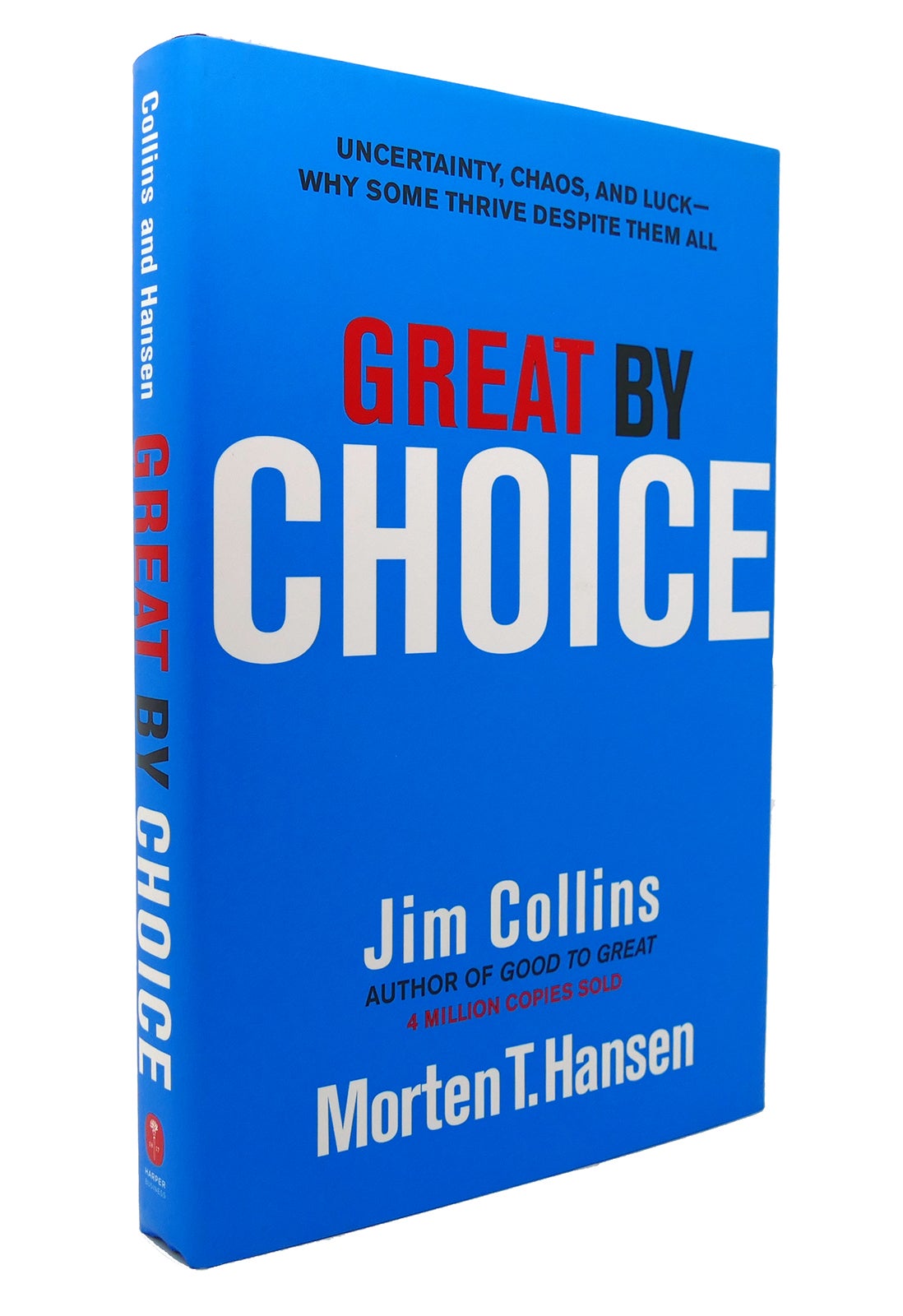- How a Burkina Faso Cashew Company Scaled Up: From Survival to Success
- Getting started with Strategy formulation and execution with Scaling Up tools
- How African Agribusinesses Can Thrive in Uncertainty: Insights from Great by Choice
- Conclusion: Mastering Strategy Execution for African Agribusiness Success
The talk about the potential of agribusiness and manufacturing in Africa is endless. From business leaders to politicians, the press and the development community we all seem to agree about “the potential” of manufacturing in Africa. I usually can’t refrain from rolling my eyes when I hear the word “potential” in this context. We’re long on talk and short on actually doing it. The key question is why so many are failing to realize the potential.
In previous articles, I’ve discussed the specific challenges to manufacturing in Africa, why I believe sustainable value chains are an excellent fit for the strengths of African agribusiness, and the key ingredients of a successful impact strategy. In this article, we’ll delve into the practicalities of workable strategies and, more importantly, strategy execution. We will explore how agribusinesses can thrive in uncertain environments by sharing our experience and leveraging insights from two business books that I think every leader of a business in Africa should read: “Scaling Up” by Verne Harnish and “Great by Choice” by Jim Collins.
Disclaimer: we do not have any business links to the authors of these books and our advice is completely independent.
How a Burkina Faso Cashew Company Scaled Up: From Survival to Success
If you’re running your SME in a similar fashion to what we did initially, you probably have some strategy written up in your business plan that you use to communicate with investors, banks and other selected external business partners. Every three years you update your plan a, including your strategy and cashflow projections, and that is it. The contents of the business plan are only known to the CEO and CFO and perhaps your COO. Most of the staff in the company does not know what is written in the document. The strategy is in your mind and the business plan is a checkbox item, disconnected from execution.
Strategic insight: finding better ways to scale up
Everything changed for us when we were transitioning the business from a stage of survival and turnaround towards growth and scaling. We recognized early on that scaling would require a different approach than the turnaround situation. We had to change our leadership style and our practices.
On top of that came a necessity from the deterioration of the security situation in our environment: terrorist groups such as Islamic State and Al Qaeda were gradually increasing their reach within Burkina Faso, and Western staff could become targets. We had to foresee the relocation of key staff to relatively remote locations and start managing across borders. We weren’t ready for this yet: key projects in food safety and technological innovation still required continuous support from outside experts.
Another of our key struggles was that we were managing way too many people ourselves and had to delegate in order to create time for important, non-urgent matters. We were stretched thin, putting in massive amounts of time and struggling to engage our middle management, whereas the business should have been on its path to less reliance on a few key individuals for its day-to-day management.
Transforming the business with Scaling Up by Verne Harnish
As with almost all problems in business, someone will have been in a similar situation and written a book about it. In our case, we came across Scaling Up – How a Few Companies Make It… and Why the Rest Don’t by Verne Harnish. The book focuses on four decisions in business: people, strategy, execution, and cash. It draws on many other excellent business books, all well-referenced in the text. Some of these books you may have read already, and I’d highly recommend reading most of them. It is not the purpose of this post to do a book review, so I’ll cut to how this book has been transformational for the way we went about running the business.

Why Strategic Thinking Time was Crucial for our success
Verne’s book convinced us to start setting aside time on a weekly basis with our senior management team of six people to consistently work on strategy. To make sure that urgent non-important matters would not interfere with the process, we booked an offsite meeting room for a fixed timeslot every week. We worked on getting to know each other better and creating high levels of trust for the collective intelligence of the group to thrive. We explored the implicit values of the business and started to codify them. We worked through strengths, weaknesses, and trends and used several tools of the book to explore strategic questions and formulate clear and concise answers. Once we felt we were ready, we started to change our rhythm of meetings and communications to include middle management in the process.
Achieving results with the Scaling Up tools
The results were nothing but spectacular. The inclusion of more people in developing strategic direction led to better decision-making. I had underestimated the power of collective intelligence, having relied on my own wits for most of my career. Putting people together in a room and building the conditions for people to trust each other and open up led to outcomes that were much better than any single one of us could have come up with. The collective brain is much superior to the sum of its parts.
By being a part of the process, the strategic outcomes were now also well understood and appropriated by the team. By creating space for all members to come up with ways for themselves to contribute to the strategic objectives, people were now engaged and continuously working to realize their priorities. At all levels of the 2000+ people in our organization, staff were thinking and contributing to our quarterly priorities. From illiterate employees with little to no education in manual jobs to the managers of the plant. Because our values, our target market, and long-term objectives were codified, it was much easier for our staff to act in accordance with them and become more autonomous decision-makers.
Management of the business became a lot easier for us as a result. We had increased the size of the senior management team a bit but had drastically cut the number of direct reports. I went down from managing close to twenty people to managing eight. The business started to gain more traction in realizing its goals. We nearly tripled processing volumes in four years while also passing challenging certifications. For food processing in a remote location, this is considerable. We were more focused in our efforts to realize key priorities and had managed to mobilize most of our organization around short-term organizational efforts. The company became less reliant on a few key individuals.
Overcoming Challenges in Scaling African Agribusiness: Our Journey
The entire process took us about two years, and we experienced several setbacks. We did not follow Verne’s book to the letter. We followed the major framework and cherry-picked and prioritized tools and methods according to our specific needs. We found the crucial part was to adopt a rhythm that allows for fast feedback loops between strategy and execution: strategy is not a one-in-three-years update to your business plan but a continuous process. The faster your feedback loop, the faster you progress and grow as an organization.
Interview Insights - Turning Around a Bankrupt Cashew Company
An earlier, shorter version of this article appeared on our blog last year. As a result, Verne Harnish, the author of Scaling Up, reached out to us, asking if we were interested in an interview about our work in Burkina Faso to publish as a case study on the ScaleUps website. You can read it here: How a once-bankrupt cashew company used the Scaling Up platform to orchestrate a turnaround.
The interview goes deeper into the specific application of the Scaling-Up tools such as the organization of the management team, the hiring process, implementation of Lean principles, and the seven strata of strategy, communication rhythms, and tools for cash flow management. While you’re on the ScaleUps website, have a look around; there are many interesting cases to learn from.
Getting started with Strategy formulation and execution with Scaling Up tools
Over the past few years, I’ve been part of several teams and I’ve convinced colleagues to read the Scaling Up book. If you can get your entire senior management team to read the book, you’ve made a great start. The next thing you should do is to schedule time for strategic thinking. When I talk to other entrepreneurs and business leaders about strategy development in their organizations, most are passionate about the subject but sometimes also express despair at the lack of tangible results their efforts generate. Some do not have the patience to put in the time required to codify purpose and values and to create the conditions necessary for collective intelligence to do its work. In truth, they’re probably caught up in extinguishing the next fire that arose because of their lack of commitment to make time for important, non-urgent work like strategy, engagement, and delegation. I know what I’m talking about; I was one of them.
Scheduled, weekly time for strategic questions is non-optional if you want to progress and scale your business, if you want to be part of the ones who make it and not of the ones who don’t. Pick up Verne’s book as a starting point, or another if that is your preference. Start talking with other entrepreneurs on strategy over a weekly breakfast meeting or get an advisor who can help you navigate the process and keep you accountable for your efforts. When well-executed, it can be an exciting and immensely satisfying process to go through. It will also give you back your freedom to work on your business instead of in your business.

Overcoming Challenges When Implementing Scaling Up in African Agribusiness
There are several challenges to overcome when you decide to work with the tools and frameworks of the Scaling Up book. Here are the top three:
Reading time
The first challenge is the information density of the book. It is very high, with numerous references to articles or other books. I had already read several of them before I came across Scaling Up, but if you haven’t, you might struggle to make sense of it all. There’s no shortcut here: prepare your reading list and start catching up. Make daily time for reading, and in a period of six months, you can easily read a dozen or so of the core books referenced by Scaling Up.
Operational experience
Recognizing how the frameworks and tools can contribute to solving your business challenges is crucial. Applying theory to practice is often difficult because everyone’s situation is unique. I’ve found that those with the most experience in running operations had an easier time recognizing how certain tools could help their situation. The more challenges and difficulties you have faced, the easier it becomes to recognize how frameworks can be useful and applied to prevent or resolve them. It absolutely helps to have an analytical mind. Get the “analysts” on your team to work on the translation between book theory and the practice of your work.
Resourcefulness in application
Your business and your environment are unique, so you need to adjust tools, frameworks, and concepts to your circumstances. I don’t think Verne had a cashew processing business in Burkina Faso in mind as the target audience when he wrote the book. At the same time, our experience shows that a principles-based approach is universally applicable and that Scaling Up is outstanding in the way it brings together decisions on people, strategy, execution, and cash. We took the concepts and principles from the book and adapted them to our situation.
A few examples of strategy execution
Adapting tools such as recruitment and communication protocols for illiterate workers
Adapting tools such as recruitment and communication protocols for illiterate workers. More than half of our workforce of almost 2500 people was illiterate. This was a key issue to consider when implementing the lessons from the book: we modified the topgrading interviewing to conduct 10-minute interviews for entry-level positions; we increased verbal communication around quarterly themes but kept it short; we emphasized the use of graphic displays on the theme and the quarterly number.
Cutting through rigid hierarchies
In the high poverty environment where we were, hierarchy and status were very important. Combined with a notion that people of status “could not” make mistakes, this was a barrier to communication flowing freely through the organization. Besides the “normal” flow of information through the hierarchy, we created short circuits: the senior management team would have a weekly lunch with seven frontline workers, no middle management present. My secretary would conduct anonymous monthly interviews with sixty members of staff, and we positioned suggestion boxes at several places so that people could leave a written note directly addressed to me. The greatest benefit of these short circuits was not necessarily the excellent suggestions and points for improvement that we got through them: it was that the regular flow of information through the hierarchy started to get better.
Addressing low levels of analytical thinking capacity
Analytical thinking skills in our environment were rare, reflecting a lack of quality education. It took years of struggling to convey abstract concepts and emphasize empirical analysis before concluding that we were not capable of compensating for this education gap in our middle management. The solution: don’t abandon concepts and numbers but keep it (mostly) to senior management. For middle management, simplify the tools and make them easily digestible. Limit priorities, set just a few numbers, and keep it short. Short but regular worked best for us. We used the power of 1% tool with middle management on one key issue only and made a small 30-minute course out of it so that everyone could follow the math and understand how small changes, imperceptible to the eye, would mean big financial returns.
Conclusion: it takes time
There are no shortcuts to success; otherwise, we wouldn’t have only a limited number of companies succeeding. Making the most of a book such as Scaling Up requires more reading, operational experience, and resourcefulness. Awareness of the operational environment you want to apply the lessons of the book in is also indispensable. Start today. Pick up the book, start making time for strategy weekly, and keep showing up week after week. It took us about two years before we had implemented most of the habits and tools in the book.
How African Agribusinesses Can Thrive in Uncertainty: Insights from Great by Choice
“Great by Choice” by Jim Collins explores why some companies thrive in uncertainty and chaos while others do not. I like the books by Jim Collins because they make scientific insights so accessible for businesspeople. “Good to Great” might be Jim Collins’ most famous work, but for African business, if I had to recommend a single Jim Collins book, Great by Choice would be my pick. Why? Because Great by Choice zooms in specifically on the proven success factors of business in uncertain and chaotic environments. I don’t think I have to explain further why that is so suitable for African business leaders.
Whereas Scaling Up is highly practical with tools, frameworks, and protocols, Great by Choice looks at behaviors and motivations. The book identifies three core behaviors that distinguish successful companies: fanatic discipline, empirical creativity, and productive paranoia. These behaviors, driven by a passion for a cause larger than personal ambition, are particularly relevant to doing business in Africa, where uncertainty is often the norm.
I had the book on my “to read” stack for a long time before eventually picking it up. I wish I had done so sooner. I was stunned by the accuracy and relevancy of the descriptions of the core behaviors. Much of our success could be traced back to one of these behaviors, and where we failed, it could be attributed to a lack of displaying one of these. So here we go.

Core behaviours for success
Fanatic discipline. Successful companies display extreme consistency of action. They are relentless in their focus on their goals and methods, maintaining high standards of performance despite external pressures. This means developing a clear strategic vision and adhering to it rigorously, regardless of external challenges of which there are many in our environment. Make progress on your strategy execution daily. Don’t skip a day, you risk creating a new habit.
Empirical Creativity. Rather than relying on conventional wisdom or authority figures, successful companies base their decisions on empirical evidence. They engage in practical experimentation and direct observation to navigate uncertainty. For African agribusinesses, this translates to making data-driven decisions, creating a business culture where you are allowed to fail when experimenting and testing hypotheses to find the best solutions.
Productive Paranoia. Successful companies maintain hypervigilance, staying attuned to potential threats and changes in their environment. They prepare for worst-case scenarios by developing contingency plans and maintaining buffers. In Africa, where political and economic instability can impact business operations, this behavior is crucial for building resilience. A lack of business resilience is one of the top reasons why African agribusinesses fail. We’ve written on this topic separately, read it here.
Applying 'Great by Choice' Principles to Succeed in African Agribusiness
There’s much more to be found in “Great by Choice” and I highly recommend you get the book. The principles outlined in “Great by Choice” can be directly applied to African agribusiness. By embracing fanatic discipline, businesses can maintain a consistent strategic focus despite the volatile environment. This involves setting clear goals, establishing robust processes, and ensuring all actions align with the company’s values and objectives.
Empirical creativity encourages agribusinesses to innovate and adapt based on real-world evidence. This could involve experimenting with new agricultural techniques, leveraging technology to improve efficiency, or developing new products to meet market demands. By prioritizing empirical evidence over conventional wisdom, businesses can make more informed decisions that drive growth.
Productive paranoia involves staying vigilant and prepared for potential disruptions. This means continuously monitoring the business environment, identifying potential risks, and developing contingency plans. For African agribusinesses, this could involve diversifying supply chains, building financial reserves, and investing in risk management strategies. Also, check our article on employee integrity risks to find more reasons why productive paranoia is a healthy behavior to display.
Conclusion: Mastering Strategy Execution for African Agribusiness Success
Mastering strategy execution in African agribusiness is not easy, but it is achievable with dedication, adaptability, and the right tools. The journey of the cashew company in Burkina Faso highlights the transformative power of a well-implemented strategic framework like Verne Harnish’s “Scaling Up.” By setting aside time for strategic thinking, mobilizing collective intelligence, and creating space for all members to contribute, we significantly improved our decision-making and operational efficiency.
Moreover, the insights from Jim Collins’ “Great by Choice” provide a valuable complement, emphasizing the importance of fanatic discipline, empirical creativity, and productive paranoia. These core behaviors are essential for thriving in the uncertain and often chaotic environment of African business.
There are no shortcuts to success. Making the most of books like “Scaling Up” and “Great by Choice” requires a commitment to continuous learning and adaptation. Start by picking up these books, scheduling regular strategy sessions, and engaging with other entrepreneurs. This disciplined approach will help you with the complexities of growth and scaling up, ultimately leading to sustainable success in African agribusiness.
Finally, it’s not just about having a strategy; it’s about executing it effectively and consistently. Start today, and watch your business thrive in even the most challenging environments.





